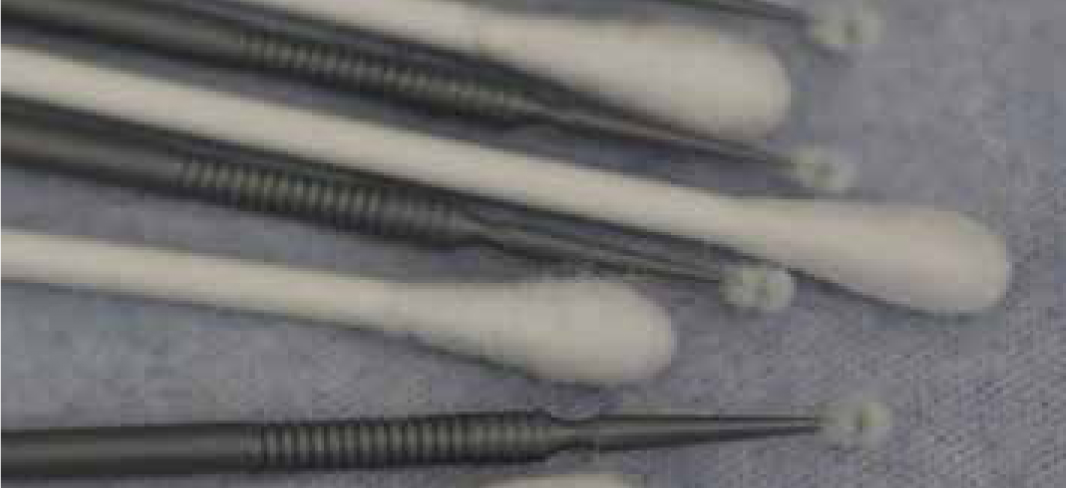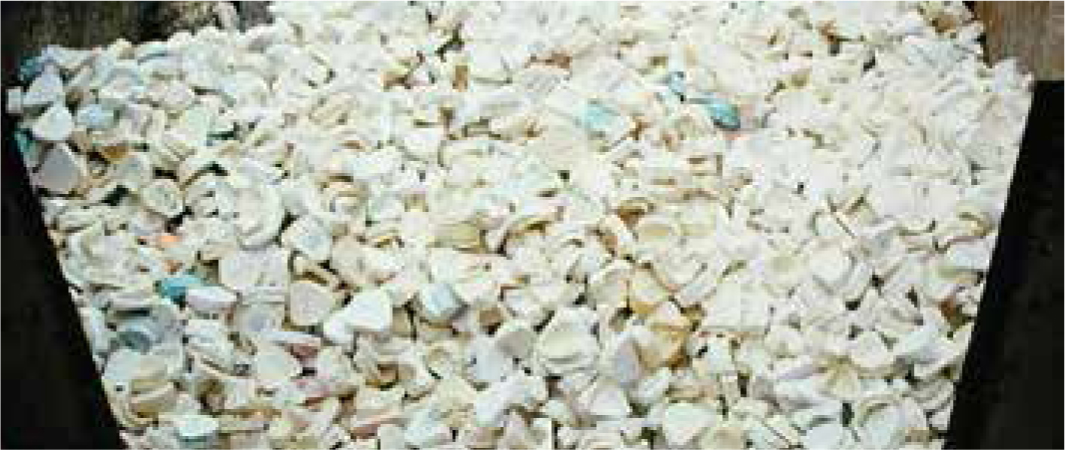Article

The recent pictures in the media of the plastic items which are due to be phased out before the end of the year, such as cotton buds, straws and drinks mixers, reminded me of items now prevalent in the dental surgery which are likely to come into the same category, such as disposable mirrors and disposable tweezers. And, of course, the sponge applicator/dispenser, which bears a remarkable, albeit smaller, similarity to the cotton bud (Figure 1)!

All of this took me back 20 years to a previous editorial,1 and to a lecture that I gave 15 years back, entitled Green Dentistry? The lecture contained illustrations of the latex and plastic packaging mountain at the end of a session in the surgery: I asked myself, is there a way that the dental surgery can ever become a green environment. At that time, 20 years ago, I suggested ways that the dental practice could become greener. This included discussions on, and solutions to:
How far have we got in 20 years? Let's look at the areas where we have had some success.
The increasing computerization of dental practices has reduced our paper mountain, although the paperless office/dental surgery might still be some way away. The area of developing solutions and their disposal is one in which the profession in the UK has made great progress. Results of recent questionnaire-based research have indicated that 74% of UK dentists are now using digital radiography.2
Regarding the latex mountain, alas, the need for infection control is not going to go away, so gloving up before treating a patient is going to continue to be with us. Infection control also means disinfectants and, by their very nature, these can be toxic. The alternative is coverage of surfaces by plastic, but the plastic mountain at the end of each day in the surgery is something that we are trying to avoid. Single-use instruments are one answer to disinfection and sterilization: some hospitals have moved to these as a way of cutting the cost of off-site sterilization. However, if the government is planning to ban drinks mixers and straws, my hunch is that it will not be long before they start looking at disposable plastic mirrors and tweezers, which contain much more plastic than the humble straw, and for which there is a reasonable alternative called an autoclave. The question is – could we manage without a sponge applicator? Is there an alternative for the application of, for example, bonding agents, fluoride gel, etc?
Regarding the plaster mountain, there has been some success. Vinyl polysiloxane remains our most stable and accurate impression material, but the other side of the coin is that the material is among the least biodegradable on the planet. The answer is the intra-oral scanner and CAD-CAM systems, like CEREC, but the uptake of these in clinical practice has been relatively slow. However, increasingly, dental laboratories are changing from plaster casts to scans. Orthodontic surgeries, instead of needing vast storage spaces for the before/after models of their patients, are turning to scanning these and digital storage. A picture sticks in my mind of the waste tip outside the old Dental Practice Board in Eastbourne, filled with dental casts (Figure 2), which had been sent in along with treatment requests for prior approval! Hopefully we are moving away from this.

My previous editorial mentioned ‘the amalgam issue’. This year, indeed in July, sees the introduction of a ban on mercury-containing materials in some patient groups, so the chance of contamination by the waste effluent will reduce, alongside the increasing use of amalgam separators.
The ultimate ‘Green dentistry’ is none at all! Prevention should therefore be central to all that we do! If that fails, minimally invasive techniques should be employed, which generally means resin-based/adhesive dentistry. We still have a long way to go, given that dentistry has only made strides on half of the issues listed above, but the first simple step might be to find an alternative to the sponge applicator and fire up the autoclave, which became redundant after the introduction of the plastic mirror. A further step will come when the cost of an intra-oral scanner drops to a level which appears cost-effective to increasing numbers of clinicians.
Recent media alerts have stemmed principally from programmes such as Blue Planet II, in which David Attenborough, almost single-handedly, has turned the tide of public opinion. A thought-provoking recent article by Laura Parker in National Geographic3 has added to this, with the paper describing how we are drowning in plastic and that more than 40% of it is used just once, then tossed away. Plastic was invented in the late 19th century, but production only took off in the 1950s, with half of the plastic ever manufactured being in the past 15 years. Now we have 9.2 billion tons of plastic to deal with and 6.9 billion tons have become waste, with 6.2 billion tons never making it to the recycling bin.3 When I was a boy (in Ireland!), green was a colour. Now it has more than 20 definitions in a variety of dictionaries, including ‘covered with grass’, ‘young or unripe’, ‘inexperienced or naïve’, ‘simple’, ‘of sickly appearance’, ‘fresh’, ‘lush’, ‘not fired (bricks or pottery)’, ‘freshly set (cement)’ and, of course, in the context of this Comment, ‘environmentally sound or beneficial’. In that regard, the ‘working life’ of a plastic bag is 15 minutes, perhaps around the same lifespan as a disposable plastic dental mirror: the ‘working life’ of a sponge applicator is circa 20 seconds. For the mirror, surely the time has come to go back to the autoclave: for the sponge applicator and the like, dentistry needs to find a green, environmentally sound, alternative.

